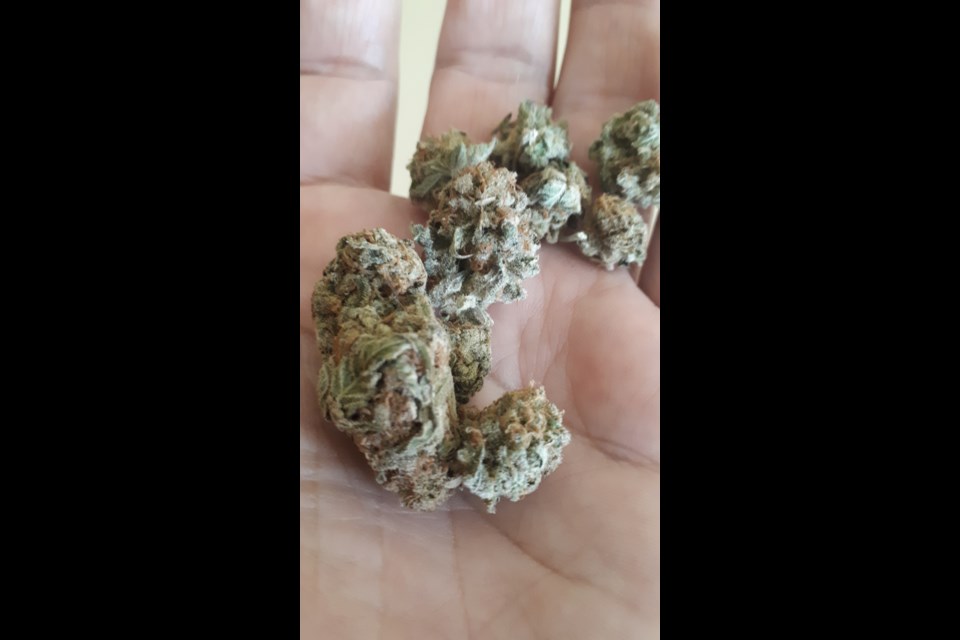Marijuana still gets a giggle from many, like an inside joke. In 2020, its use is generally a tolerated social behavior.
Though legalized and mainstreamed, weed, pot, ganja, reefer, cannabis, bhang, hemp, kef, dope, grass, blow, Mary Jane, skunkweed, wacky-backy - and all the connoisseur varieties - still has a bit of a mystery.
For those who have never experienced it - or even for those familiar- it is worth reminding ourselves of its history and effects.
In essence where has it come from, and why does it do what it does? Why does it make many feel so darn good? Lastly, why could this be of benefit to those experiencing chronic pain?
Briefly, hemp was used to make fabric during the dawn of agriculture, while the first use of cannabis for medicinal purposes was recorded thousands of years ago. During the height of the sailing era, hemp was the rope of choice as its fibres’ supple but strong character delivered dependability and durability.
“Most cultures viewed hemp as a gift, or treasure, from the Divine Spirit, to be used during ceremonials, at which time it was either burned as incense, ingested for deep meditative and heighten awareness, smoked for pleasure, or worn for clothing during these ceremonies,” said Marijuana Today’s website.
There is archaeological evidence that it was being smoked - for spiritual insight through its psychoactive effects - several millennia ago in the Pamir Mountains of Tajikistan. Beyond inhalation through “joints,” cannabis can be vaped, offered in food, or as an extract in an oil or alcohol based tincture.
A source offered these observations: “When I was younger in the 1970s I used marijuana recreationally and actually grew some both inside and in my garden … it made music and food more enjoyable and social interaction more pleasant.”
Well, now there is no need to hide your use or grow plants surreptitiously between the corn and the pole beans.
Psychoactive drugs induce an altered state of consciousness. Good quality cannabis’ effects include: feelings of intoxication and detachment, relaxation and intensified senses.
Some under its influence become more talkative and laugh, though this is portrayed stereotypically as the Hollywood version of the silver screen stoner. Benefits include for some decreased anxiety and potentially sharpness or alertness, and get the dosage right then a sense of calm and tranquility. Others say that beyond the euphoria they become “aroused.” It all depends.
While some seek the effect of depressants (a feeling of relaxation and calm), others pursue stimulation (a rise of energy and alertness), and yet others, the properties of hallucinogenic elements (leading to perceptual distortions such as hallucination). For many it is a toboggan ride with a few thrills and a gentle ending.
From “Mango Kush” and “Purple Haze” to “Girl Scout Cookies” strains, and from Sativa, Indica, to hybrid there are flavours and aromas that evoke memories and mindfulness.
Perhaps, offers one source, marijuana affects thoughts, systems, and body differently for each of us. Certainly, increased sensations could become overly sharp, and the flip side of decreased anxiety could be panic or paranoia, and this is why prescribed quantity and quality is one of the key elements of medical marijuana for pain management.
In both modalities, modifying the perceptions, feelings, sensations and emotions of the user is the desired outcome. Balancing CBD and THC has become a science and profitable industry in Canada.
Arthritis, PTSD, and chronic pain; Marijuana can help alleviate these debilitations for some users. The list is long and includes Parkinson's, phantom limb pain, and seizures to name just three more.
Sudbury resident John Lindsay, 83, shared “… when cannabis became available for medical purposes I was one of the first to try to see if it would help my arthritis. I take one ml each evening of 10 mg of THC and 15 of CDB. I have been a patient for three years now and have used the same dosage so one 40 ml bottle of oil lasts more than a month. I have noticed that most arthritic pain has been reduced and as a side benefit I sleep through the night.”
Andrew Olivier, another Sudbury resident, says Marijuana controls chronic pain and muscle spasms. The standard prescription drug options made him feel unwell, and unhappy.
Like Olivier, “Mason” shared that edibles give him “relief and a good sleep.” “Mason” added: “… It helps my pain management at the end of the day. Through edibles, I've become a more relaxed and listening person. I used to ‘go go’ too much. But [now] have stepped down a notch. Maybe due to age and experience too but weed has helped me become a better person. Growing is therapeutic too. It’s Zen time.”
When a psychoactive drug enters the user's body, it induces an intoxicating effect. The effects last for two to six hours, depending on the amount inhaled or ingested. Onset is within minutes when smoked, and about 30 to 60 minutes when cooked and eaten.
The main psychoactive component of cannabis is tetrahydrocannabinol (THC), which is one of the 483 known compounds in the plant, including at least 65 other cannabinoids.
The potential "high” or stoned feeling and other effects include relaxation, and an increase in appetite (the "munchies” is a common post exposure experience) which could be valuable for nutrition maintenance in cancer victims and improving appetite for those taking HIV/AIDS medications.
Reducing nausea (and vomiting) for those in cancer treatment is yet another application that works for some and not for others.
Is Cannabis for you?
Maybe.
Hugh Kruzel is a freelance writer in Greater Sudbury.
